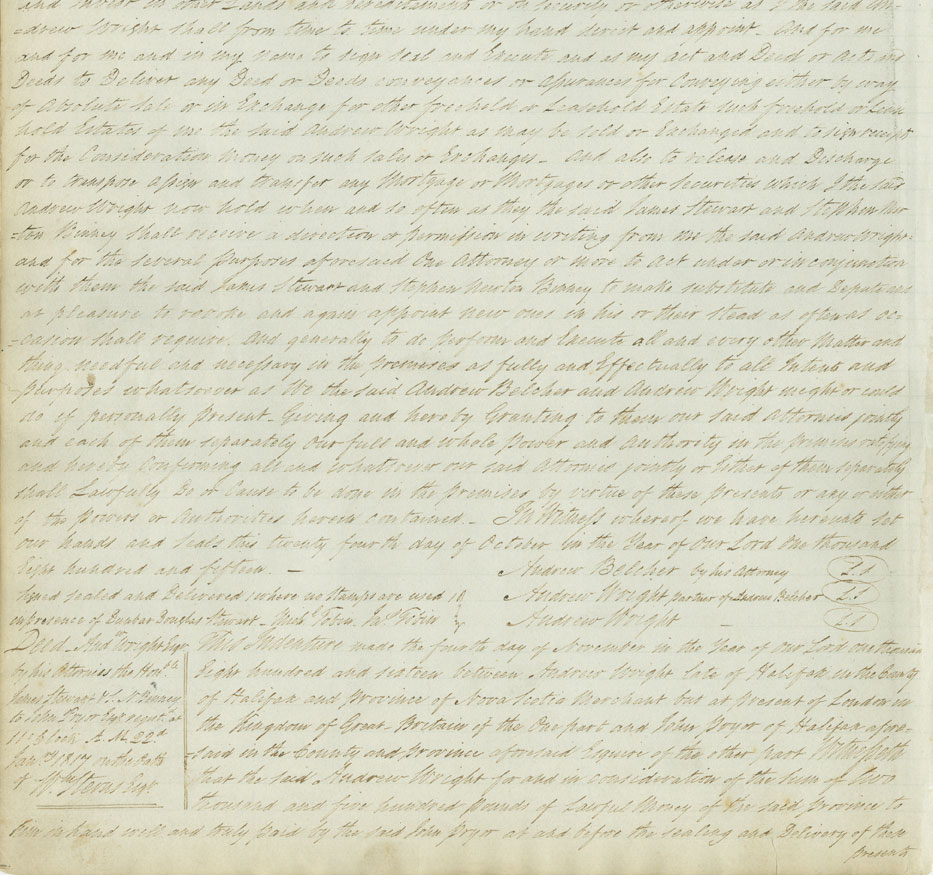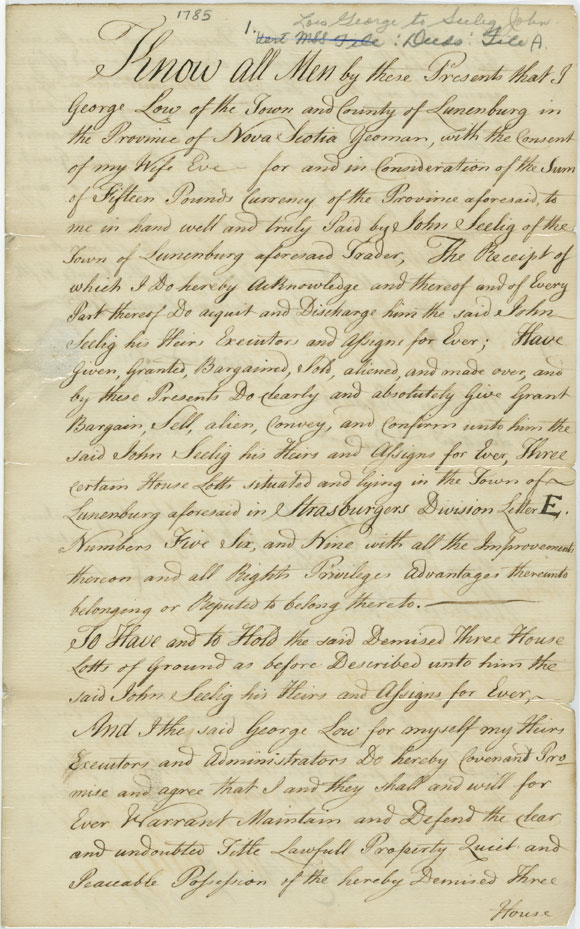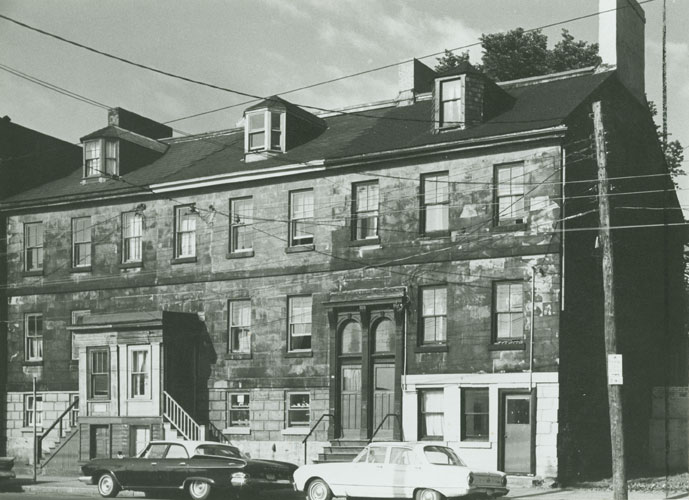Nova Scotia Archives
Built Heritage Resource Guide
Nova Scotia Registry of Deeds
Researching the history of any older home or property inevitably involves establishing a chain of ownership across time — and this in turn requires working with property records, i.e. carrying out a title search.
The deed registry system has operated in Nova Scotia since 1752, beginning in Halifax and subsequently spreading to all eighteen counties. County boundaries have changed over the years and while most counties today have one registry office only, usually located in the shire town, some counties (Guysborough, Lunenburg and Shelburne) have maintained two offices at certain times. Before starting your title search, you'll need to determine the correct county and deed office for the time period and geographic area you're interested in. If you're not sure, Bruce Fergusson's study, The Boundaries of Nova Scotia and Its Counties (copies in the Nova Scotia Archives Library) can help.
You may want to start your title search at your local Deed Registry. All the registries charge fees for accessing and using records, as well as for photocopying material in their custody.
For researchers working at the Nova Scotia Archives, we have an excellent set of records on microfilm from all the Deed Registries around the province. Our set is organized by county and includes both the deed indexes — absolutely essential! — from the date of each county's creation until the late 1960s, and the deeds themselves from the date of the county's creation to about 1900. In order to complete the entire chain of ownership from 1960 to the present, however, you'll probably need to visit the appropriate county Deed Registry at some point.
Carrying out a title search is not the world's easiest exercise, but with a little perseverance — and some assistance from the Nova Scotia Archives staff or Registry clerks — you'll gradually find what you're looking for....unless somewhere in the chain of ownership, someone neglected to register a critical record (it has been known to happen...!).
Researchers must be careful when checking deed indices, because within any given Index Book there are two alternating indices operating at the same time. One page in the book will list Grantors (sellers) and the next page will list Grantees (buyers) — so keep a watchful eye on the heading at the top of each page, to determine in which direction the traffic is going. Researchers may find, for example, an individual listed as a Grantee on one page, and then subsequently see the same name selling the same land, listed on the very next Grantor page; or decades (and pages) may pass before the property is conveyed again. This sequence and presentation — which works forward and backward across time — is absolutely essential to establishing the chain of ownership for any given piece of property.
Why the need for two directions? The object of any title search is to identify the buyers and sellers of a specific property over time, in order to construct an uninterrupted and incontestible chain of ownership; without the double-index / parallel-index mechanism, there's no way to do this, since the names of all the parties in the chain are not known to the researcher beforehand.
How does this work in practice? Well, let's look at Greenwood Cottage, the jewel in the crown of Historic Sherbrooke Village. It has had a number of owners over time, and the sequence of their ownership can be traced in transactions recorded at the Sherbrooke Registry Office. The house was built about 1872 by John Cumminger, a successful local merchant who is reputed to have been inspired by a villa he saw while touring France; upon his return to Sherbrooke, he built a replica in wood and named it 'Greenwood Cottage' after the intricate gingerbread-cottage trim along the eaves of the house.
Researchers should also be on the lookout for indexing peculiarities, especially within counties having a high percentage of residents with Scots ancestry. Surnames beginning with 'Mac' and 'Mc' are not indexed under the letter 'M' but rather under the first letter of the remainder of the surname. For example, McDonald is indexed under the letter 'D', McLeod under 'L', and McPherson under 'P'.
Deed Between Andrew Wright, Halifax, and John Pryor, Halifax
Date: 22 January 1817
Reference: Halifax County DeedsNova Scotia Archives Book 43 p. 104 microfilm 17891
Residence of W.J. Murdoch, Sherbrooke, NS
Reference: Nova Scotia Archives Photo Collection: Places: Sherbrooke: Houses: Murdoch, W.J.
Deed Between George and Eva Low and John Seelig, Lunenburg
Date: 1785
Reference: Deeds, Bills of Sale, Legal DocumentsNova Scotia Archives MG 10 vol. 20 K-P no. 160a
"Map of That Plat of Ground Late Sold by John Liddle to George Isles..."
Date: April 1816
Artist: Valentine Gill
Reference: Deeds, Bills of Sale, Legal DocumentsNova Scotia Archives MG 10 vol. 20 K-P no. 149
Pryor Terrace,1346-1352 Hollis Street, Halifax, NS
Date: ca. 1967
Photographer: M.E.B. Martin
Reference: Heritage Trust of Nova ScotiaNova Scotia Archives accession no. 1982-560 no. 13




